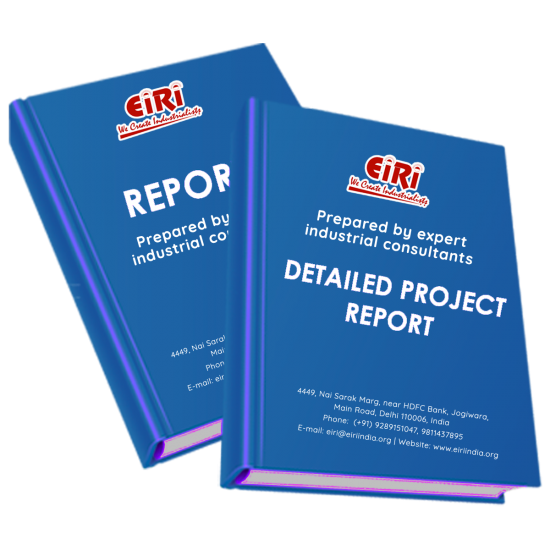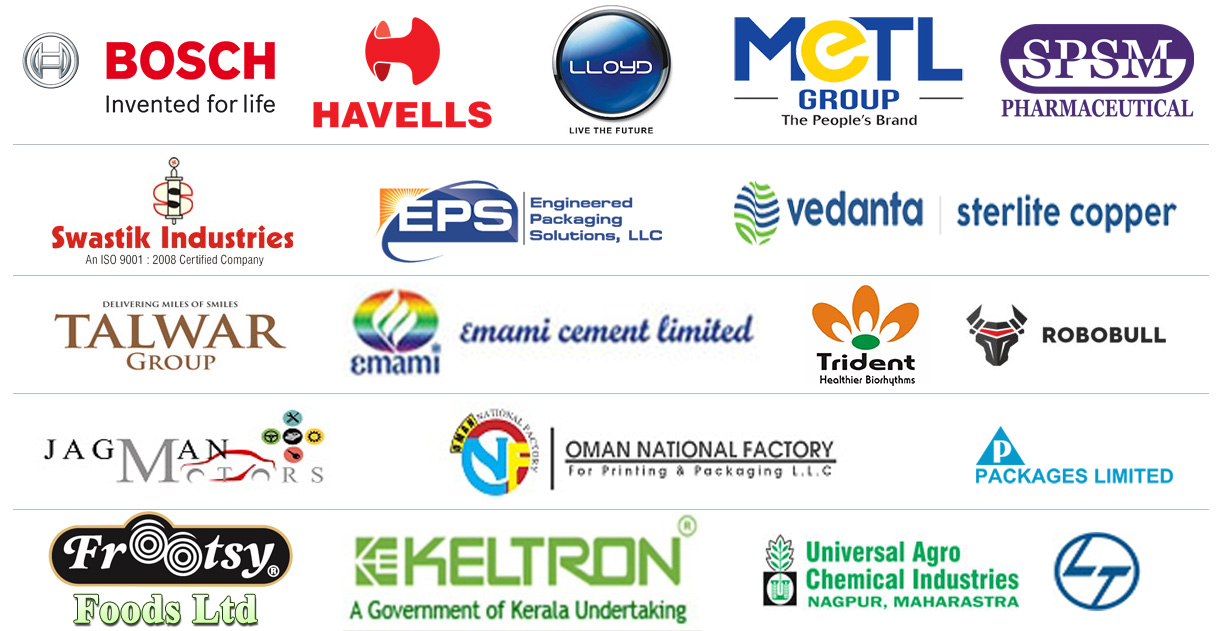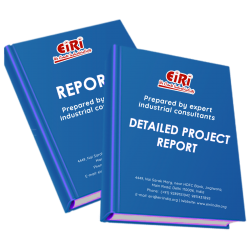Detailed Project Report on Fabrication of Heat Exchangers

- More than 40 years of experience
- Managed by expert industrial consultants
- ISO 9001-2015 Certified
- Registered under MSME, UAM No: DL01E0012000
- 24/5 Research Support
Get your quesries resolved from an industry expert. Ask your queries before report or book purchase. - Custom Research Service
Speak to the our consultant to design an exclusive study to serve your research needs. - Quality Assurance
All reports are prepared by highly qualified consultants & verified by a panel of experts. - Information Security
Your personal & confidential information is safe & secure.
FABRICATION OF HEAT EXCHANGERS
[EIRI/EDPR/1020] J.C.9659
INTRODUCTION
Heat exchangers are devices whose primary responsibility is the transfer (exchange) of heat, typically from one fluid to another. However, they are not only used in heating applications, such as space heaters, but are also used in cooling applications, such as refrigerators and air conditioners. Many types of heat exchangers can be distinguished from on another based on the direction the liquids flow. In such applications, the heat exchangers can be and be parallel-flow, cross-flow, or counter current. In parallel-flow heat exchangers, both fluid involved move in the same direction, entering and exiting the exchanger side by side. In cross-flow heat exchangers, the fluid paths run perpendicular to one another. In countercurrent heat exchangers, the fluid paths flow in opposite directions with each exiting where the other enters. Countercurrent heat exchangers tend to be more effective than other types of exchangers.
Aside from classifying heat exchangers based on fluid direction, there are types that vary mainly in their composition. Some heat exchangers are comprised of multiple tubes, whereas others consist of hot plates with room for fluid to flow between them. Its important to keep in mind that not all heat exchangers depend on the transfer of heat from liquid to liquid, but in certain cases use other mediums instead.
Types of Heat Exchangers
Shell and Tube Heat Exchanger
Shell and tube heat exchangers are comprised of multiple tubes through which liquid flows. The tubes are divided into two sets: the first set contains the liquid to be heated or cooled. The second set contains the liquid responsible for triggering the heat exchange and either removes heat from the first set of tubes by absorbing and transmitting heat away in essence, cooling the liquid or warms the set by transmitting its own heat to the liquid inside. When designing this type of exchanger, care must be taken in determining the correct tube wall thickness as well as tube diameter, to allow optimum heat exchange. In terms of flow, shell and tube heat exchangers can assume any of three flow path patterns.
Plate Heat Exchanger
Plate heat exchangers consist of thin plates joined together with a small amount of space between each plate, typically maintained by a small rubber gasket. The surface area is large and the corners of each rectangular plate feature an opening through which fluid can flow between plates, extracting heat from the plates as it flows. The fluid channels themselves alternate hot and cold fluids, meaning that heat exchangers can effectively cool as well as heat fluid they are often used in refrigeration applications. Because plate heat exchangers have such a large surface area, they are often more effective than shell and tube heat exchangers.
Regenerative Heat Exchanger
In a regenerative heat exchanger, the same fluid is passed along both sides of the exchanger, which can be either a plate heat exchanger or a shell and tube heat exchanger. Because the fluid can get very hot, the exiting fluid is used to warm the incoming fluid, maintaining a near constant temperature. A large amount of energy is saved in a regenerative heat exchanger because the process is cyclical with almost all relative heat being transferred from the exiting fluid to the incoming fluid. To maintain a constant temperature, only a little extra energy is need to raise and lower the overall fluid temperature.
Adiabatic Wheel Heat Exchanger
In this type of heat exchanger, an intermediate fluid is used to store heat, which is then transferred to the opposite side of the exchanger unit. An adiabatic wheel consists of a large wheel with threads that rotate through the fluids both hot and cold to extract or transfer heat.
COST ESTIMATION
Plant Capacity 30 Nos/Day
Land & Building (500 Mtr.) Rs. 57.50 Lac
Plant & Machinery Rs. 16.00 Lac
Working Capital for 3 Months Rs. 62.23 Lac
Total Capital Investment Rs. 1.46 Cr
Rate of Return 32%
Break Even Point 57%
CONTENTS
INTRODUCTION
USES AND APPLICATION
B.I.S. SPECIFICATIONS
MARKET SURVEY
PRESENT MANUFACTURERS/SUPPLIERS
SPECIFICATION OF HEAT EXCHANGER
B.I.S. FOR METAL JACKETED GASKET
MANUFACTURING PROCESS
PUNCH PRESS
PROCESS FLOW CHART
PLANT LAYOUT
SUPPLIERS OF RAW MATERIALS
SUPPLIERS OF PLANT AND MACHINERY
APPENDIX – A:
01. PLANT ECONOMICS
02. LAND & BUILDING
03. PLANT AND MACHINERY
04. OTHER FIXED ASSESTS
05. FIXED CAPITAL
06. RAW MATERIAL
07. SALARY AND WAGES
08. UTILITIES AND OVERHEADS
09. TOTAL WORKING CAPITAL
10. TOTAL CAPITAL INVESTMENT
11. COST OF PRODUCTION
12. TURN OVER/ANNUM
13. BREAK EVEN POINT
14. RESOURCES FOR FINANCE
15. INSTALMENT PAYABLE IN 5 YEARS
16. DEPRECIATION CHART FOR 5 YEARS
17. PROFIT ANALYSIS FOR 5 YEARS
18. PROJECTED BALANCE SHEET FOR (5 YEARS)
How to Make Project Report?
Detailed Project Report (DPR) includes Present Market Position and Expected Future Demand, Technology, Manufacturing Process, Investment Opportunity, Plant Economics and Project Financials. comprehensive analysis from industry covering detailed reporting and evaluates the position of the industry by providing insights to the SWOT analysis of the industry.
Each report include Plant Capacity, requirement of Land & Building, Plant & Machinery, Flow Sheet Diagram, Raw Materials detail with suppliers list, Total Capital Investment along with detailed calculation on Rate of Return, Break-Even Analysis and Profitability Analysis. The report also provides a birds eye view of the global industry with details on projected market size and then progresses to evaluate the industry in detail.
We can prepare detailed project report on any industry as per your requirement.
We can also modify the project capacity and project cost as per your requirement. If you are planning to start a business, contact us today.
Detailed Project Report (DPR) gives you access to decisive data such as:
- Market growth drivers
- Factors limiting market growth
- Current market trends
- Market structure
- Key highlights
Overview of key market forces propelling and restraining market growth:
- Up-to-date analyses of market trends and technological improvements
- Pin-point analyses of market competition dynamics to offer you a competitive edge major competitors
- An array of graphics, BEP analysis of major industry segments
- Detailed analyses of industry trends
- A well-defined technological growth with an impact-analysis
- A clear understanding of the competitive landscape and key product segments
Need Customized Project Report?
- Ask for FREE project related details with our consultant/industry expert.
- Share your specific research requirements for customized project report.
- Request for due diligence and consumer centric studies.
- Still haven't found what you're looking for? Speak to our Custom Research Team
About Engineers India Research Institute:
Note: We can also prepare project report on any subject based on your requirement and country. If you need, we can modify the project capacity and project cost based on your requirement.
Our Clients

Our Approach
- Our research reports comprehensively cover Indian markets (can be modified as per your country), present investigation, standpoint and gauge for a time of five years*.
- The market conjectures are produced on the premise of optional research and are cross-accepted through associations with the business players
- We use dependable wellsprings of data and databases. What's more, data from such sources is handled by us and incorporated into the report
Why buy EIRI reports?
- Our project reports include detailed analysis that help to get industry Present Market Position and Expected Future Demand.
- Offer real analysis driving variables for the business and most recent business sector patterns in the business
- This report comprehends the present status of the business by clarifying a complete SWOT examination and investigation of the interest supply circumstance
- Report gives investigation and top to bottom money related correlation of real players/competitors
- The report gives gauges of key parameters which foresees the business execution























